Essay from the catalog for the exhibition William Tersteeg: Sphere of Influence. Held at the Linder Gallery, Keystone College, March 24-April 29, 2012.
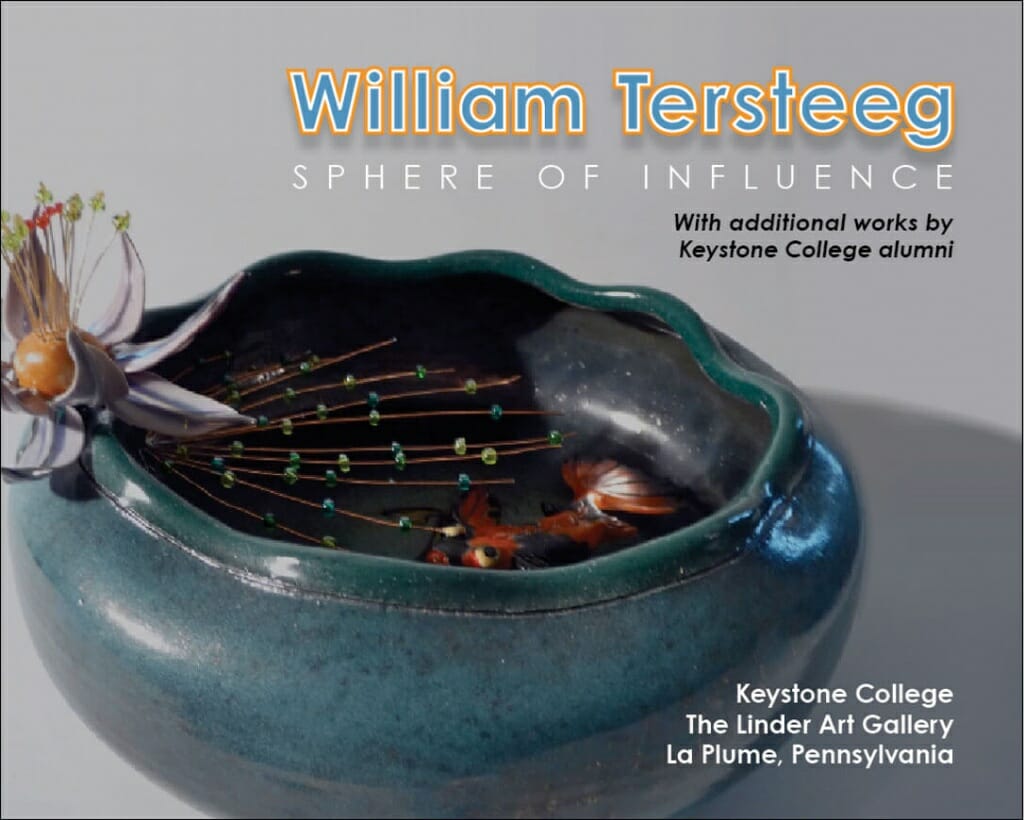
There’s an old joke:
Question: What is a ceramist?
Answer: A sculptor who can’t draw.
Well, okay…an old joke and a bad one. And in William Tersteeg’s case, a very inaccurate one, too. Of course, Tersteeg is not alone among ceramists who draw well, nor is his work unusual for including drawn imagery as a central feature. But the beauty of his drawing is surely one element (among many) that has attracted throngs of admirers to his art for over forty years.
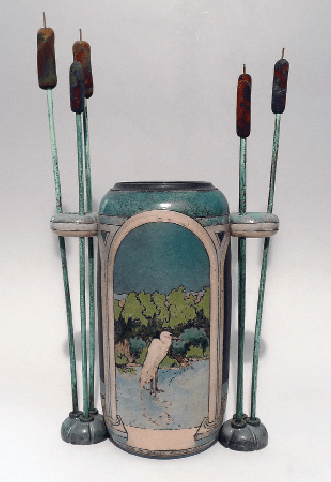
Indeed, Tersteeg’s dedication to drawing is one of the reasons I include myself among this throng. I recall the artist speaking of how, in graduate school (normally a time for exclusive study of one’s niche), he continued to take figurative drawing classes semester after semester. In an art form such as ceramics, however, the traditional problems of drawing are made more complex, as issues such as the physical curvature of the picture plane come into play (something few drawing classes would ever address). Then there is the problem of combining the two-dimensional, drawn representation with the three-dimensional ceramic form in a way that is integrated and balanced. In Tersteeg’s work, the drawn images are never an addendum to his forms or a forced effort to fill empty spaces. Rather, as a work such as Softly on My Eyes (fig. 1) demonstrates, the drawing is as central to the piece as the traditional vase form, the flanking sculptural forms, and the artist’s inventive use of materials.
So it is more than simply his mastery of drawing, ceramics, or sculpture that constitutes Bill Tersteeg’s art—it is the totality and interplay of all these elements together. Consider this artistic problem:
Create a traditional ceramic vessel. Add sculptural elements to both the interior and exterior of the vessel. Integrate drawn imagery, and incorporate non-clay materials to enhance the formal qualities and the thematic content of the work. Do so in a well-crafted and aesthetically pleasing way.
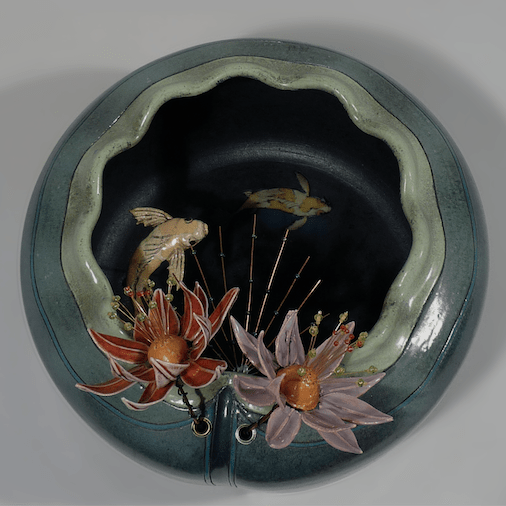
The solution, at least for this discussion, is the exceptional Fish Bowl (fig. 2). The title is somewhat of a misnomer, for though the work certainly has the form of a bowl, one would hardly choose to keep fish in it, and though there are drawn and sculpted fish inside, the artistic space in which they swim cannot be a bowl. Rather, as the lily blossom confirms, it is a fraction of a pond. In a manner similar to Picasso’s Guitar sculpture of 1914, in which the artist crafted a cylinder around the negative space of the sound hole to define the body of the guitar, Tersteeg creates a bowl-shaped volume that samples the larger volume of the pond. But unlike the body of a guitar, a pond contains water, and Tersteeg suggests this through the color of the bowl, the rippled rim, and the beaded copper wires that fan from the lily, implying the surface of the water. It is an elegant solution to a daunting artistic challenge.
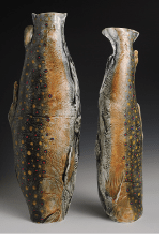
Exhibitions such as this one intend to show how one artist has affected others, and certainly the title of this show, Sphere of Influence, conveys that idea. What is noteworthy here, I think, is how inconspicuous Tersteeg’s influence is on his former students. Aside from the mutual interest in subject matter that Mark Chuck (fig. 3) shares with his mentor, and perhaps a shared sensibility toward form seen in the pieces by Melanie Walter (fig. 4), Joe Straka, and Jeff Kuratnick, the influence of professor on student is not outwardly pronounced. This is, of course, as it should be. In fact, it seems a great accomplishment that of the twenty former pupils in this exhibition, all of them are producing highly individualized work. And yet this individuality does not diminish the very real impact Tersteeg has had on each artist, an impact that is all the greater for its subtlety.
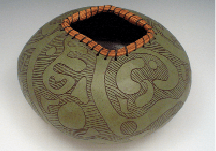
For that matter, it is an impact he has had on us all. We do not need to have spent time in his classroom to be influenced by Bill Tersteeg; as with all notable artists, he confronts us through his work, affecting the way we see and challenging our notions of ceramic art, drawing, and sculpture. In the end, we are all a part of his sphere of influence, and we are better off for that.
Here’s to an ever-widening circle yet to come.
